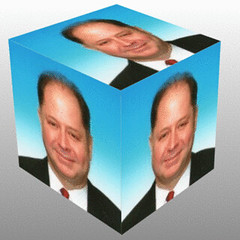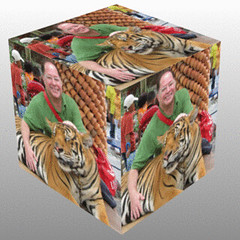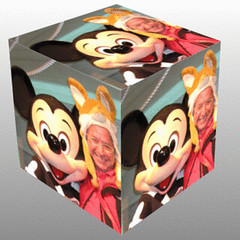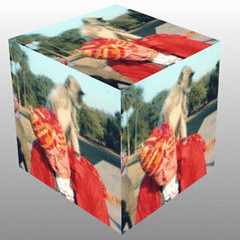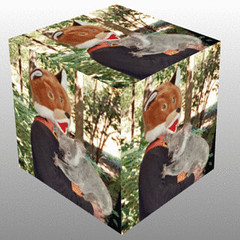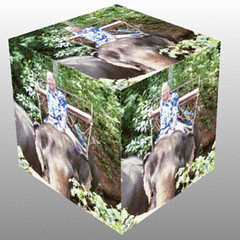
Archie has finally proposed to Veronica and in honor of this event I have written the following post about teenage humor comic books.
This is the sixth post in a series that pits non superhero genre heroes from the DC and Marvel universes against each other. The first post looked at Westerns and Western heroes (https://foxhugh.wordpress.com/2009/02/13/dc-vs-marvel-western-heroes/ ), the second post looked at war comics and war heroes (https://foxhugh.wordpress.com/2009/03/21/dc-vs-marvel-war-heroes/ ), the third post looked at women’s comics and working women (http://atomic-temporary-3328128.wpcomstaging.com/2009/04/11/dc-vs-marvel-working-women ) and the fourth post looked at space operas and spacemen (https://foxhugh.wordpress.com/2009/04/20/dc-vs-marvel-spacemen/ ). The fifth post analyzed funny animals (https://foxhugh.wordpress.com/2009/06/10/dc-vs-marvel-funny-animals/ )
The genre of this post is teenage humor and the heroes are the teenagers of this non superhero genre. The ultimate comic book archetype of this genre would be Archie published by MLJ/Archie Comics. The enduring success of Archie has created many imitators over the years. Archie was so successful that characters in his universe became spin off titles. Some of the Archie characters that had their own titles include Jughead, Betty, Veronica, Reggie and even less well known characters such as Principal Weatherby, Dilton Doily, and Big Ethel. Interestingly, Archie went through a superhero phase. The Archie superhero stories were written as parodies of regular superheroes. Archie was Pureheart the Powerful. Jughead was Captain Hero.
The DC teenagers include Scribbly, Buzzy, Binky, Scooter and Debbie. Scribbly the boy cartoonist was invented by comic book giant Sheldon Mayer for Dell Comics in 1936. Scribbly moved to the back pages of DCs All American Comics in 1939. The last appearance of Scribbly in that title was in 1944. When Archie became popular, Scribbly returned in his own series for 15 issues between 1948 and 1952. Binky then appeared in the back pages of DC’s other two teen humor titles, Buzzy and Leave it to Binky.
Buzzy was a hipster, unlike Archie, and one of the few none Archie clones in this genre. Buzzy was part of a five-piece combo. Buzzy graduated from the All Funny Comics anthology to his own title that ran from 1944 to 1958. Buzzy became more and more an Archie clone during the run of the title.
Binky started in his own title, Leave it to Binky, immediately in 1948 in response to the success of Archie. Binky was a teenager in high school and his title lasted until 1958. Binky won the Shazam Award for best inker in 1970 and this is not a genre known for winning awards.
Scooter was the main character in the title Swing with Scooter that was launched in 1966 almost ten years after the demise of Buzzy and Binky. Scooter was named after his scooter that he used for transportation and was a British mod. A mod can be considered a type of sixties British hippie. Scooter was transplanted to Laurel City, USA. Scooter was lucky enough to be born in an era when crossovers became more common and he met the likes of Batman and Superman. There will be no such teen humor/superhero crossover until Archie meets the Punisher published in 1994.
Scooter is probably the only DC character of the teen humor genre that I remember. I was born in 1957 and missed all the other DC teens due to my age but vaguely remember running into Scooter in the newsstands. My own parents were into the whole hippie, mod, whatever thing in the sixties, and because of this, I found the character a little interesting but even as a youth was smart enough to realize this comic book was being written by people who had no idea what was going on in the sixties counter culture. The writers were middle aged, the slang was more lame than hip. When a 12 year old can figure this out about your dialogue then your title is in trouble. I had been an on and off, tepid fan, of Archie since I was eight years old until I was about 14, so the problem wasn’t that I didn’t like the genre. The problem wasn’t I didn’t like Scooter. Scooter lasted 36 issues and for a non superhero genre that is pretty good so maybe the slang worked on other less worldly teens.
Debbi starred in Date with Debbi that ran 18 issues from1969 to 1972. Debbi was a red head. Debbi looked like a female version of Archie, right down to the chubby cheeks and this is not a good thing! I am surprised the series lasted as long as it did.
I have mentioned in other posts, in this series, how the DC imprint Vertigo has consistently rebooted non superhero material from DC’s obscure comic book past. I challenge Vertigo to do a miniseries about DC’s long lost teens. How about a look at the teens twenty years later? The DC teens are all working as office workers at a paper company, no, the paper company has already been done, maybe a computer support company. They go to a bar and reminiscence about their lost youth and decide to do something crazy as a group. Look up their lost loves? This would give an excuse to see all their supporting casts. Go to Thailand? Maybe they do something even crazier. Maybe they take acid together in Amsterdam that was accidentally mixed with alien DNA and they merge into Super Hip. Maybe a road trip where they see their lost loves, go to Thailand and then go to Amsterdam.
Super Hip briefly appeared in the Adventures of Bob Hope DC comic book and basically could alter reality as this super power is referred to nowadays. Mostly Super Hip displayed Superman type powers. Super Hip’s alter ego, Tad, went to Benedict Arnold High School. Super Hip is one of those totally obscure DC characters that didn’t even rate a mention in Who’s Who in the DC Universe. Super Hip was drawn in a cartoony style that was reminiscent of teen humor characters. I think Super Hip was some sort of misguided attempt to combine a super hero with a teen humor character.
The Marvel teenagers include Millie the Model, Chili and Patsy Walker. Patsy Walker was popular from the 1940s until 1967 and even supported several spin off titles. Patsy Walker was a red head and her romantic rival was black haired Hedy Wolfe. Betty and Veronica, of Archie Comics, of course are blonde and black haired respectively and minus super hero costumes perhaps hair color is needed to differentiate comic book characters in situations where a lack of a consistent house style can confuse young readers. In 1973, Marvel brought back the name but totally rewrote the character, and made Patsy Walker the alter Ego of the super heroine known as Hellcat. This is similar to what Marvel did with Night Nurse, a romance genre heroine that was remade into the nurse of super heroes.
There is some overlap between romance comics and teenage humor comics. For example, Millie the Model went back and forth from being a romance comic to a teen humor comic. The art on the cover lets the reader know which version of Millie they are dealing with immediately. The romance comic version of Millie the Model issues were drawn in a more realistic fashion. The teen humor version is in a cartoony style that imitated the Archie Comics house style.
Chili was the red headed rival of Millie and in her own series was consistently a teen humor title. The clothes that Millie and Chili wore are a big part of both series. Both titles featured paper dolls and outfits in the comic book. Many of the Millie comics, the romance version, showed off very glamorous fifties type outfits. Many covers of Millie had her sporting evening gowns and furs. Not exactly something you would wear to the mall. I think Marilyn Monroe might have been the inspiration for these covers. Chili,in her own series, on the other hand, consistently wore very mod clothes with bright colors and even pant suits and wore stylish clothes you might actually see in the mall in the late sixties and seventies.
Despite the difference in art styles between the teen humor and romance genres, there are many similarities in plot lines. Both genres highlight male/female relationships in general and love triangles in particular, but the story line of a romance comic leads to love or a broken heart while the story line of a teenage humor comic leads to a punch line.
Another interesting difference between the plot lines is that teenage humor generally portrays a young man such as Archie being pursued by two gals such as Betty and Veronica. In romance comics, a woman is pursued by two men. One of the men would be the wild one and one the stable one. In teenage humor the main difference between the two gals would be the color of their hair. Although upon further examination Betty represents the nice girl next door while Veronica is more of a vamp but the main difference between them is definitely their hair color. A Mad Magazine parody of Archie named Starchie highlights this lack of difference between Betty and Veronica. Starchie tells that parody version of Jughead that Betty and Veronica are drawn totally differently despite the fact they have had identical poses and are drawn exactly alike, except for their hair, throughout the parody.

Teens in this genre do not fight but instead compete romantically and generally win or lose via practical jokes. The three Marvel female teens, Millie the Model, Patsy Walker and Chili go out on a group date with the DC teens, Scribbly, Buzzy, Binky, Scooter and Debbi. There are four women and four men so someone is going to go home alone. Millie the Model is a model! In teen humor comics looks are everything so all the guys go after Millie, leaving Patsy and Debbie to sulk in the soda shop and reflect how unfair life is.
Patsy, Debbi and Chili decide to play a trick on the guys. After all fellow red heads have to stick together when dealing with gorgeous blondes! Patsy and Debbie slip some pepper and salt into the sodas of the guys while the boys all stare at Chili and Millie walking to the restroom together. Chili is deliberately doing her sexiest walk, in her tight, oh so sixties, short, short little dress. Did I mention that I have very fond memories of sixties styles? The boys all choke on their foul tasting sodas and Patsy, Debbie and Chili laugh their heads off. The boys agree this is a very funny joke and that they deserved their treatment because of how they ignored the red heads. Scooter is a mod, with a sixties, as opposed to fifties view of sexuality and has actually been with a woman. Scooter starts to reflect that Chili is pretty mod and that the competition for Millie is just too intense. Later Scooter and Chili will marry and then divorce. The Marvel red heads hurt the DC men, even if they had help from a DC gal, so Marvel wins!
My other website at:
Other DC vs. Marvel Posts
WereVerse Universe Baby!

